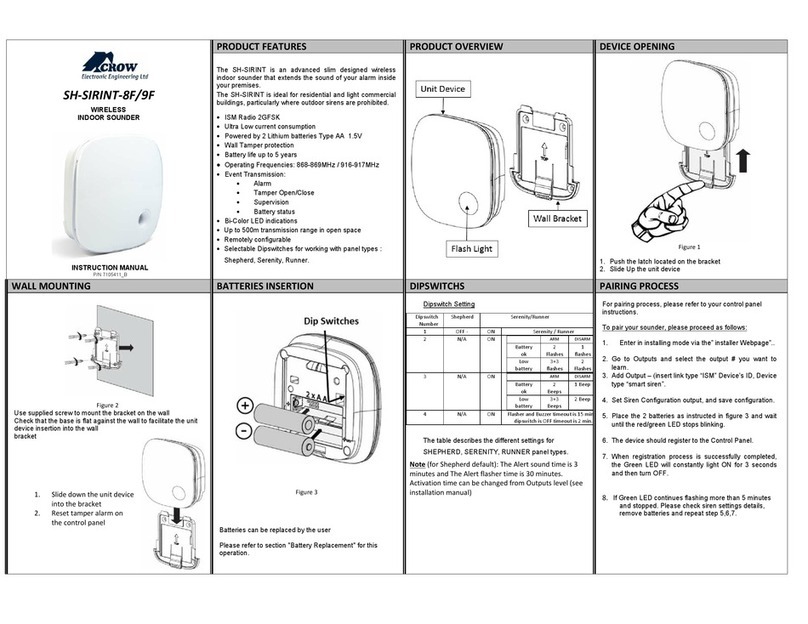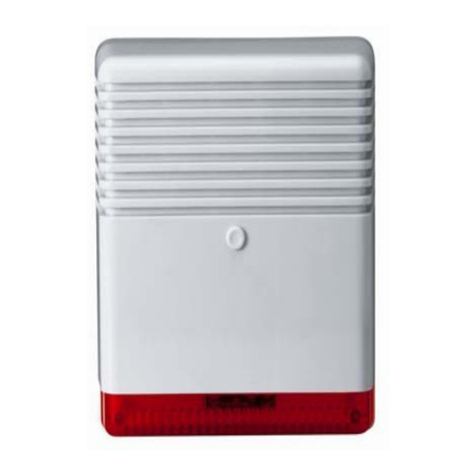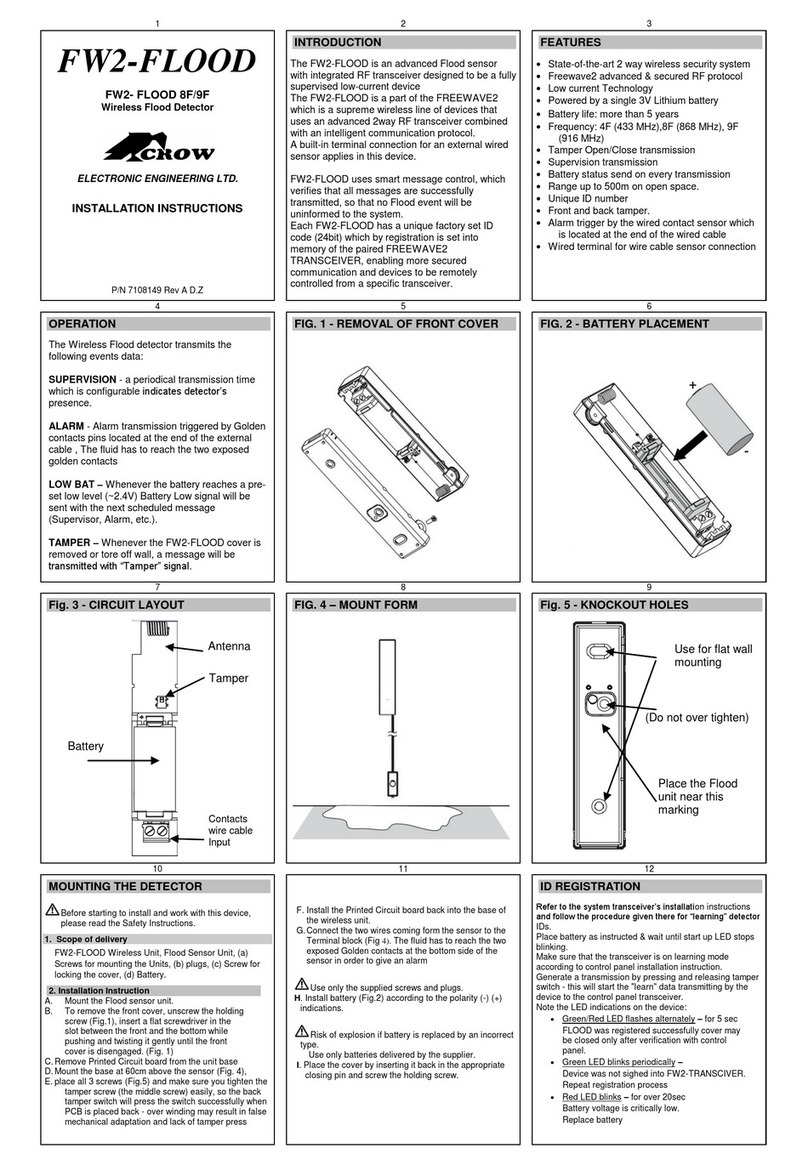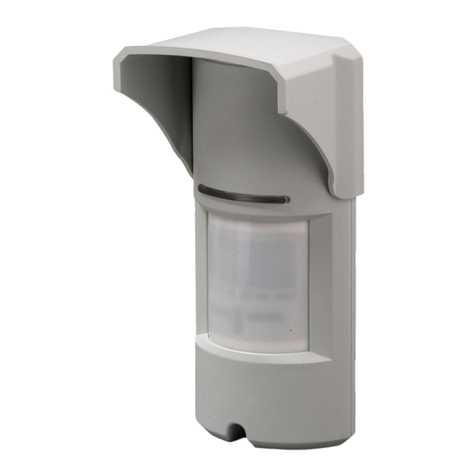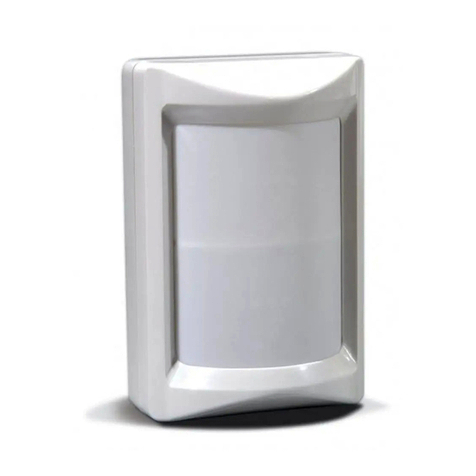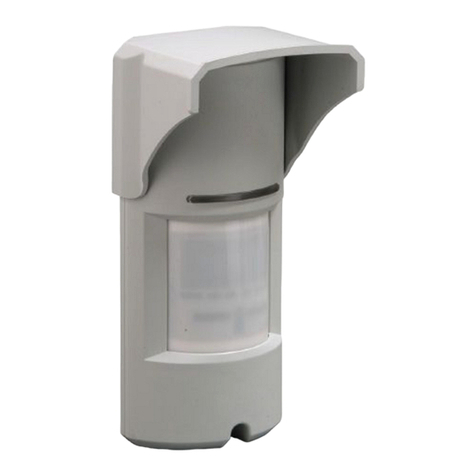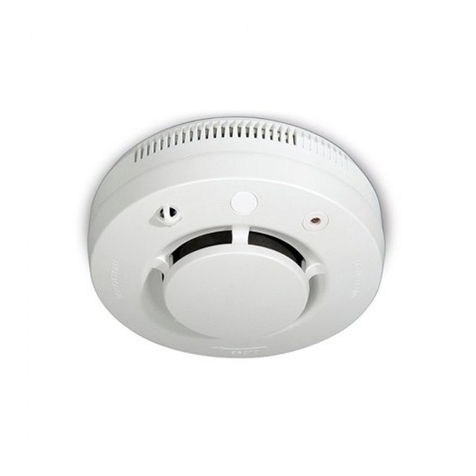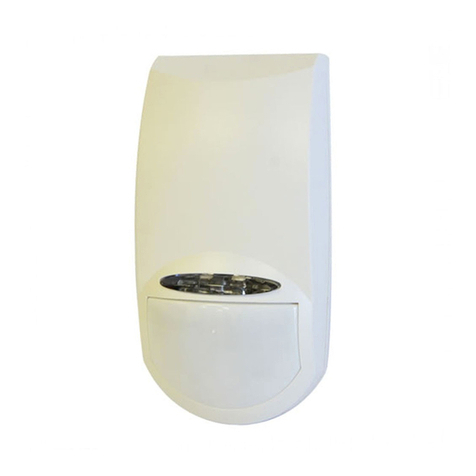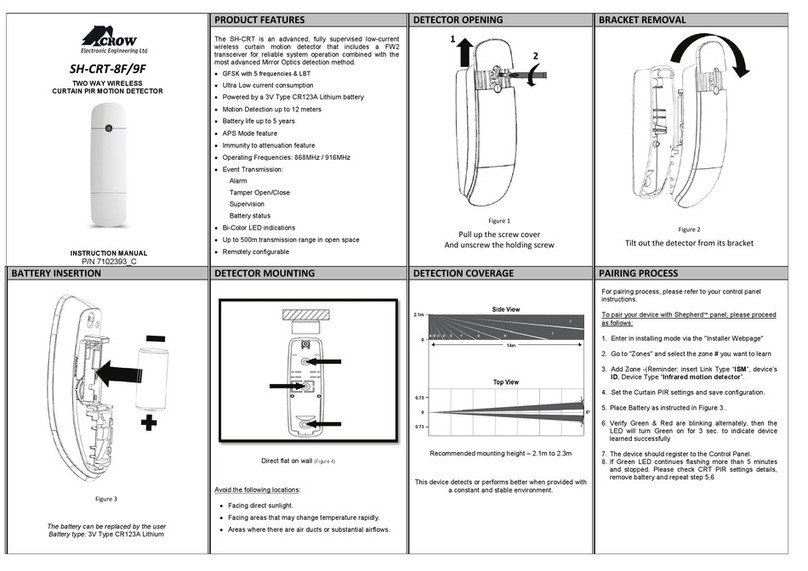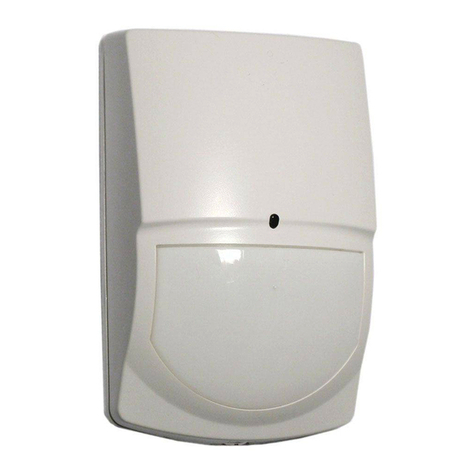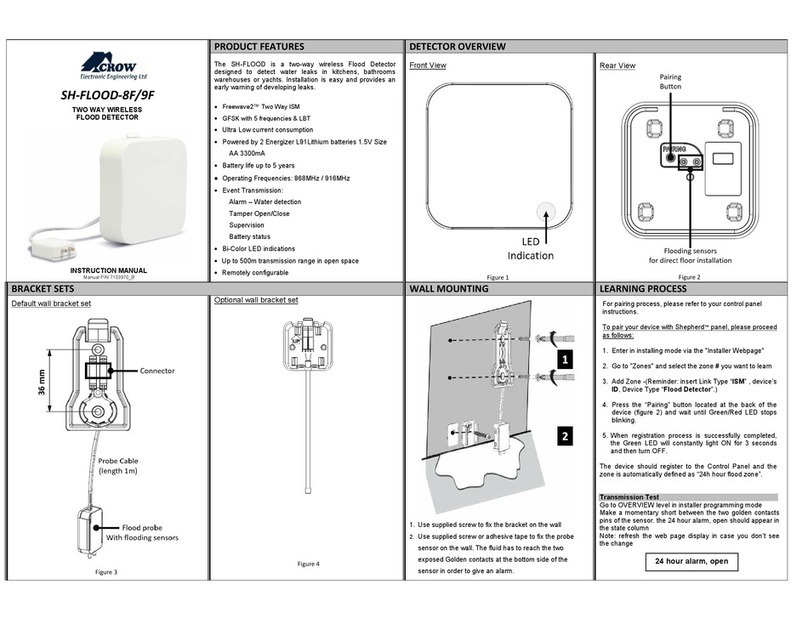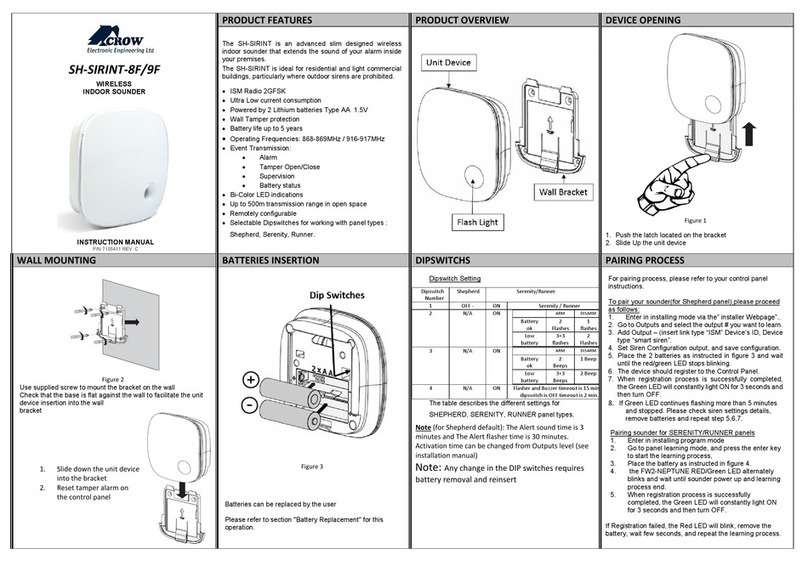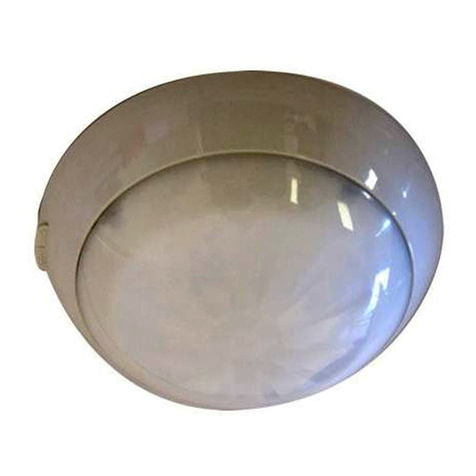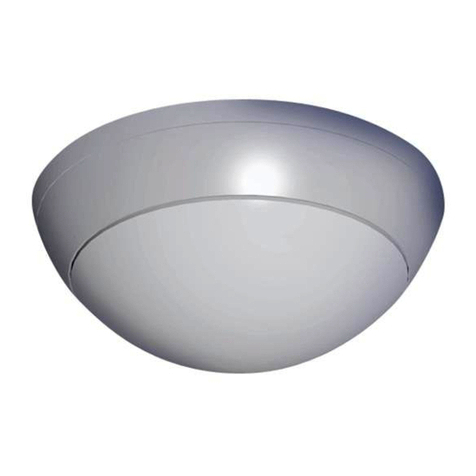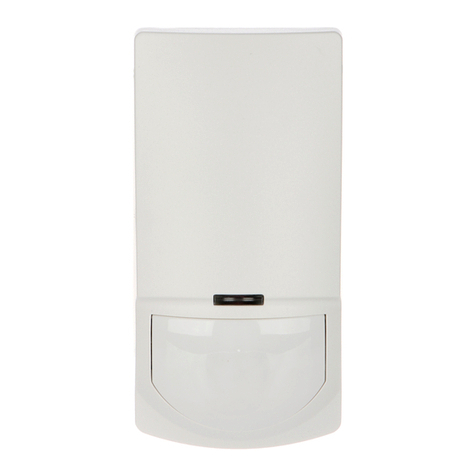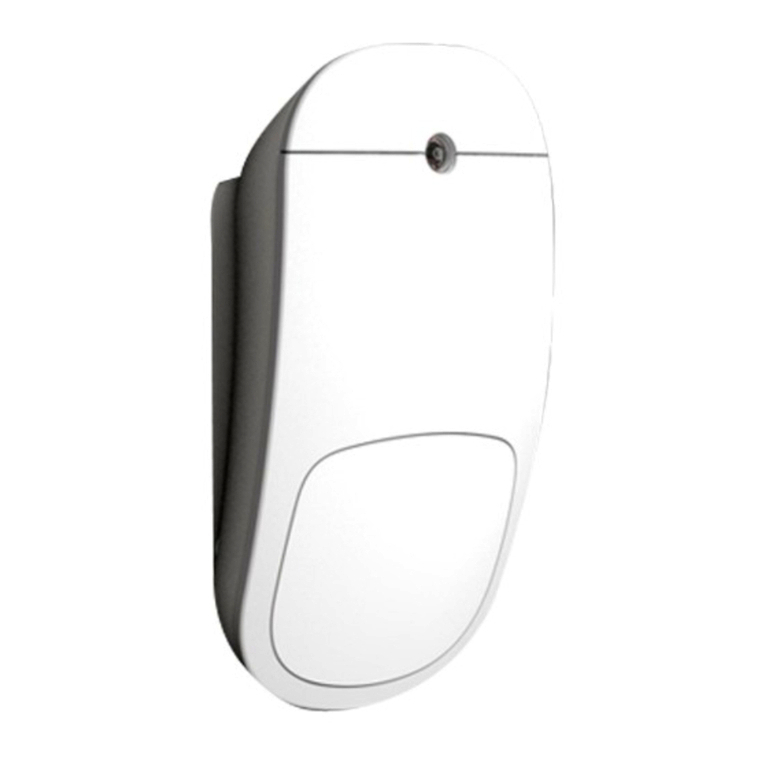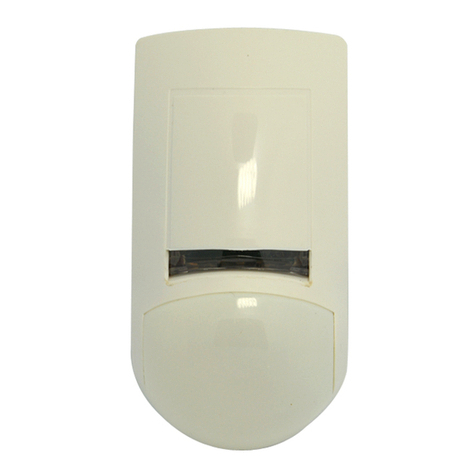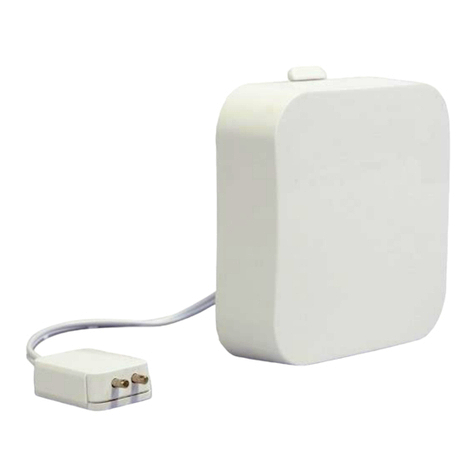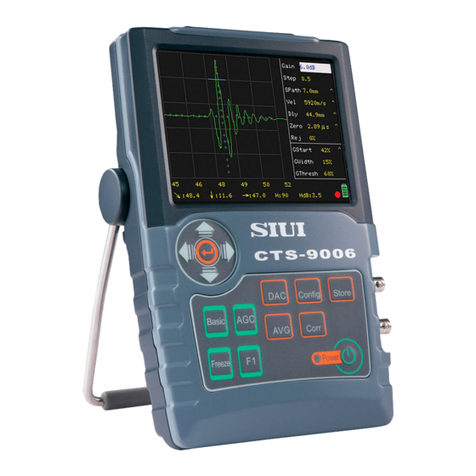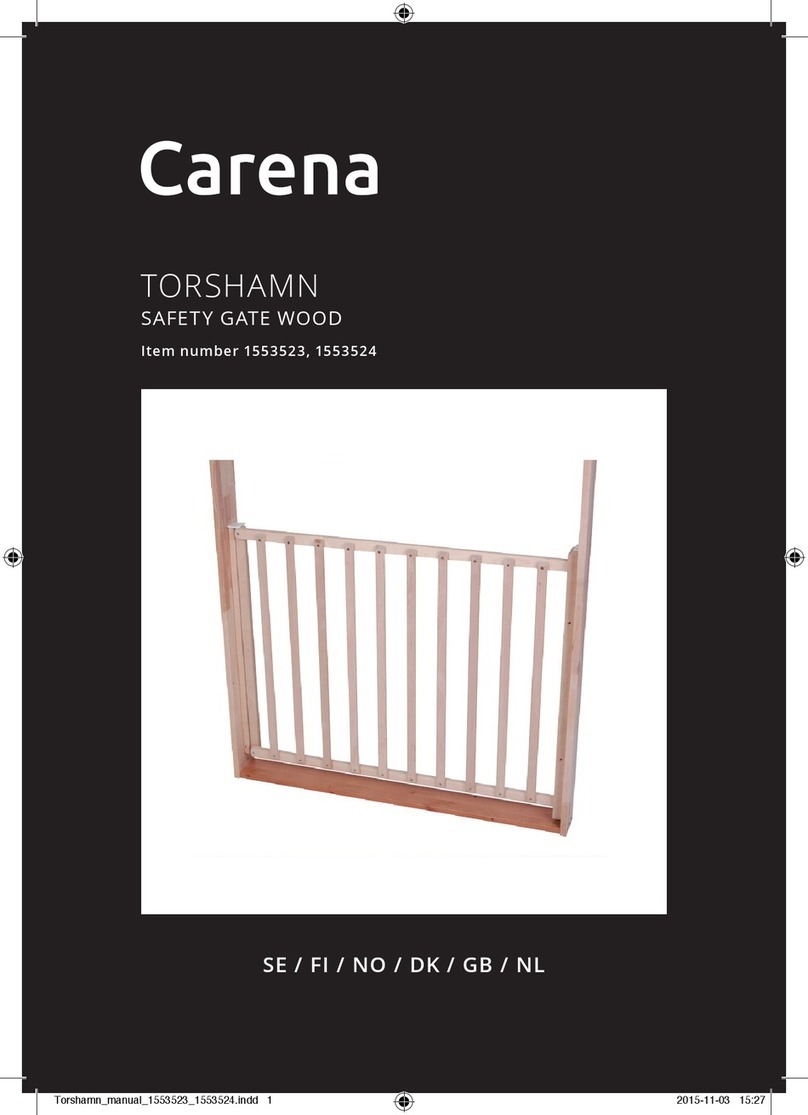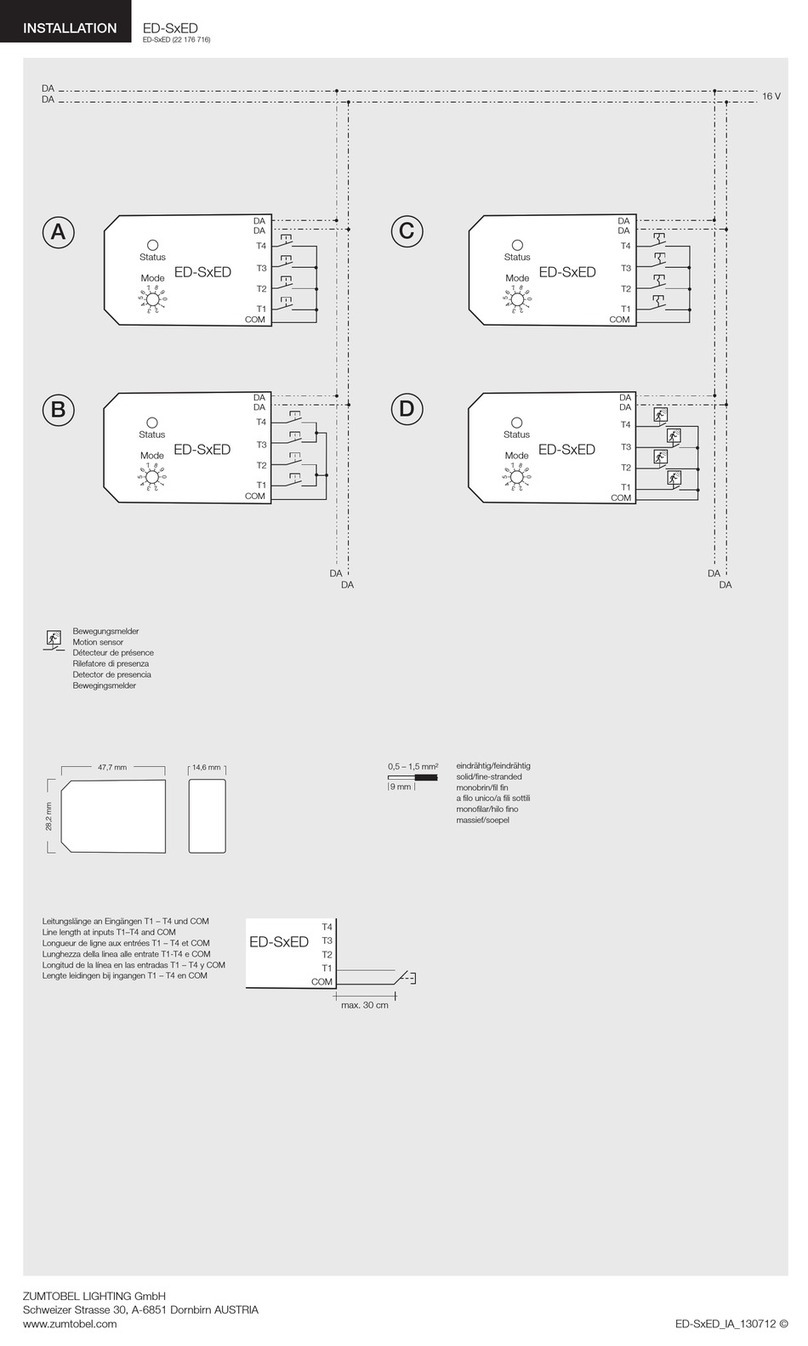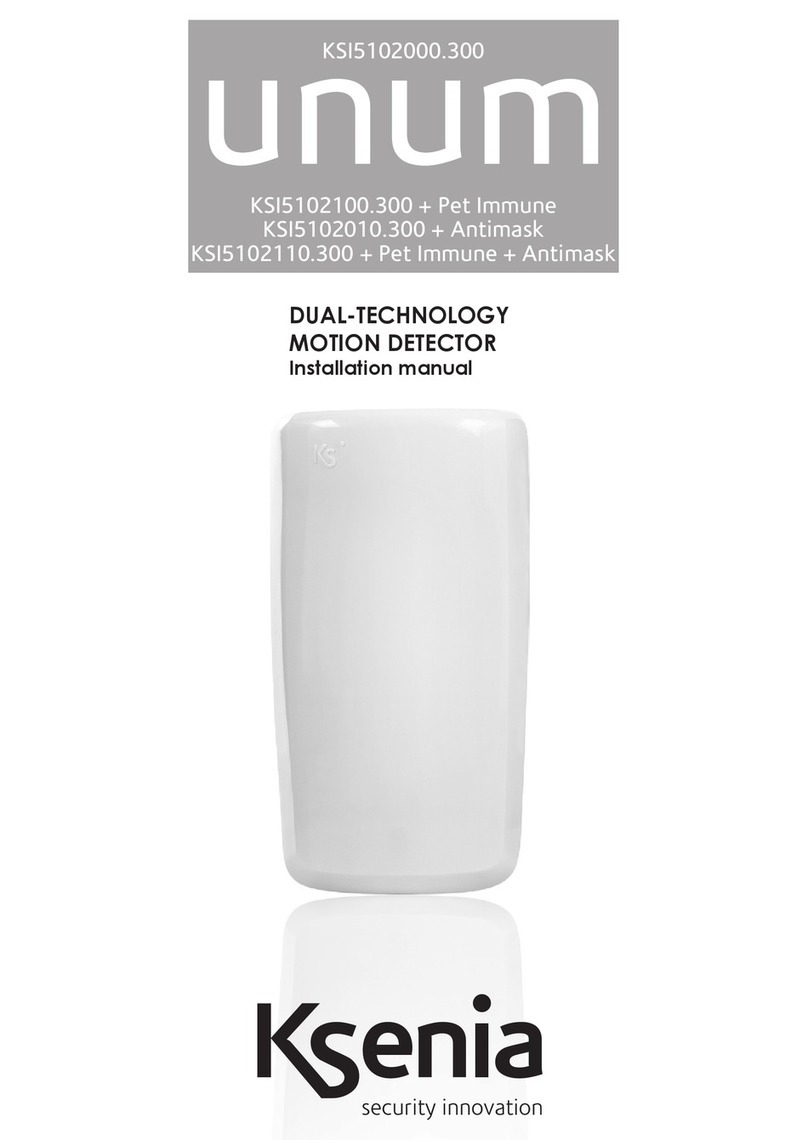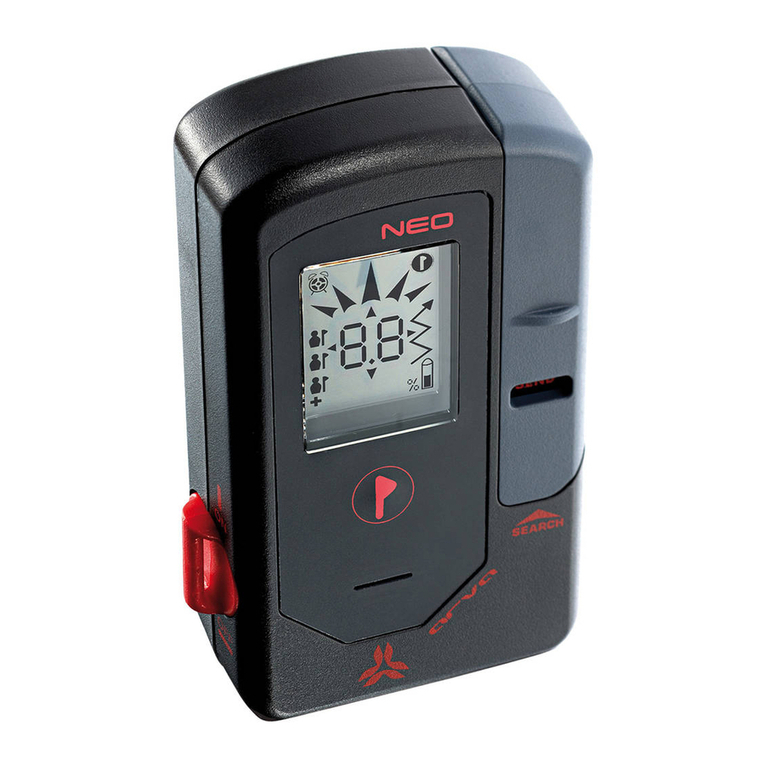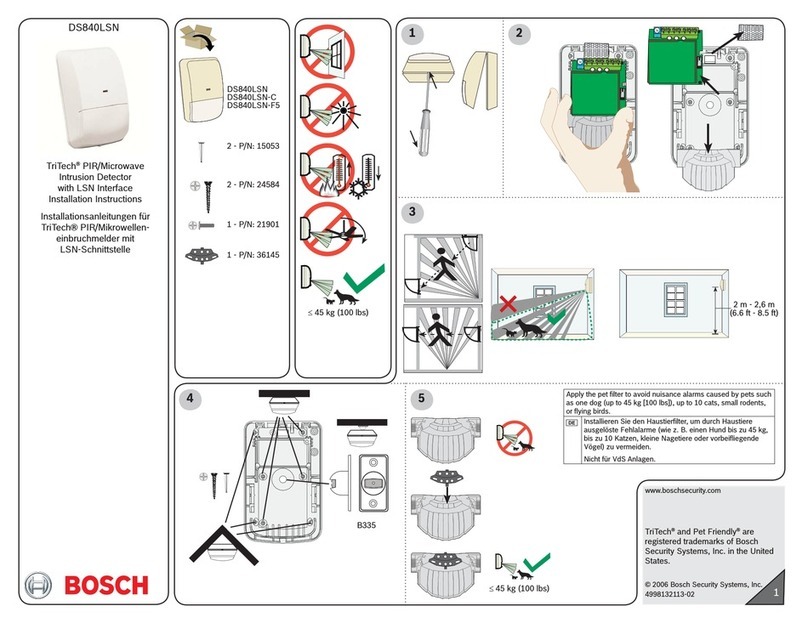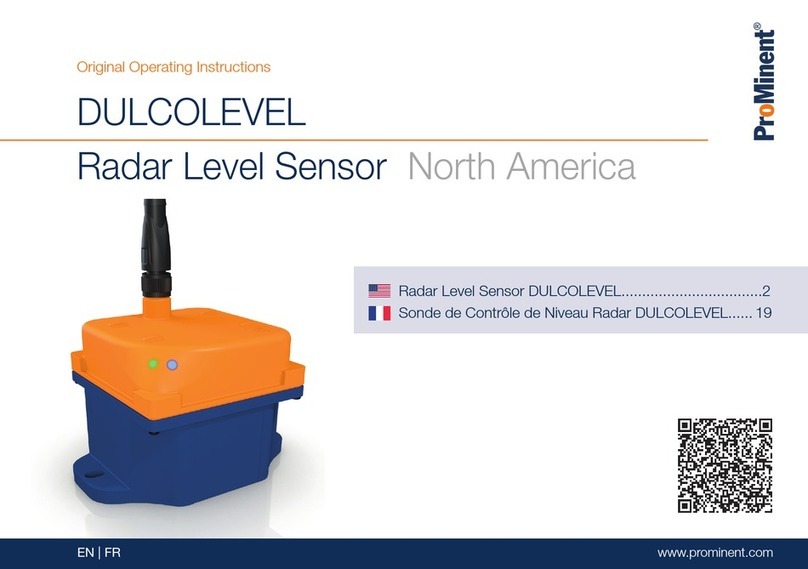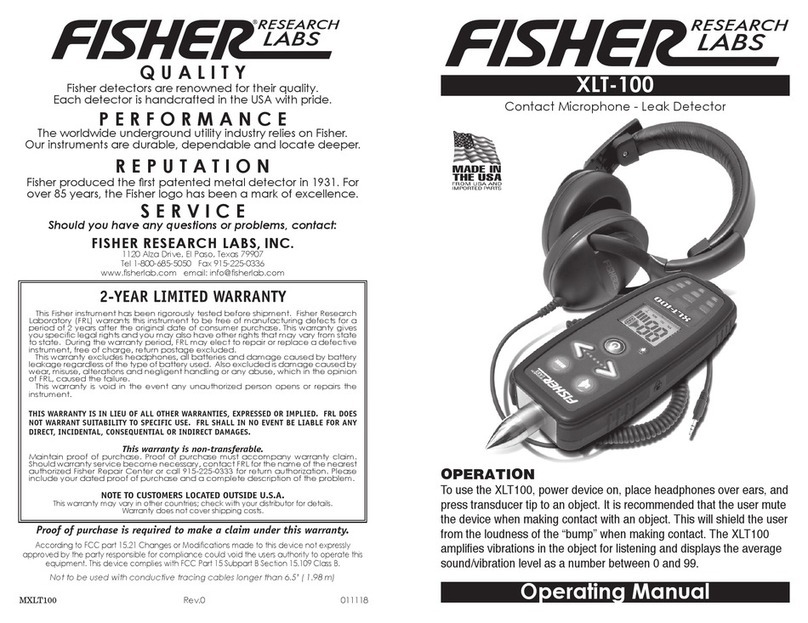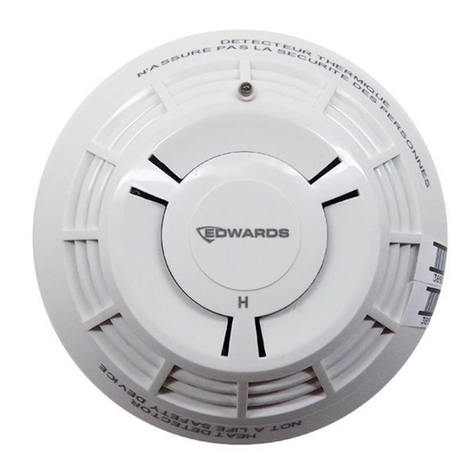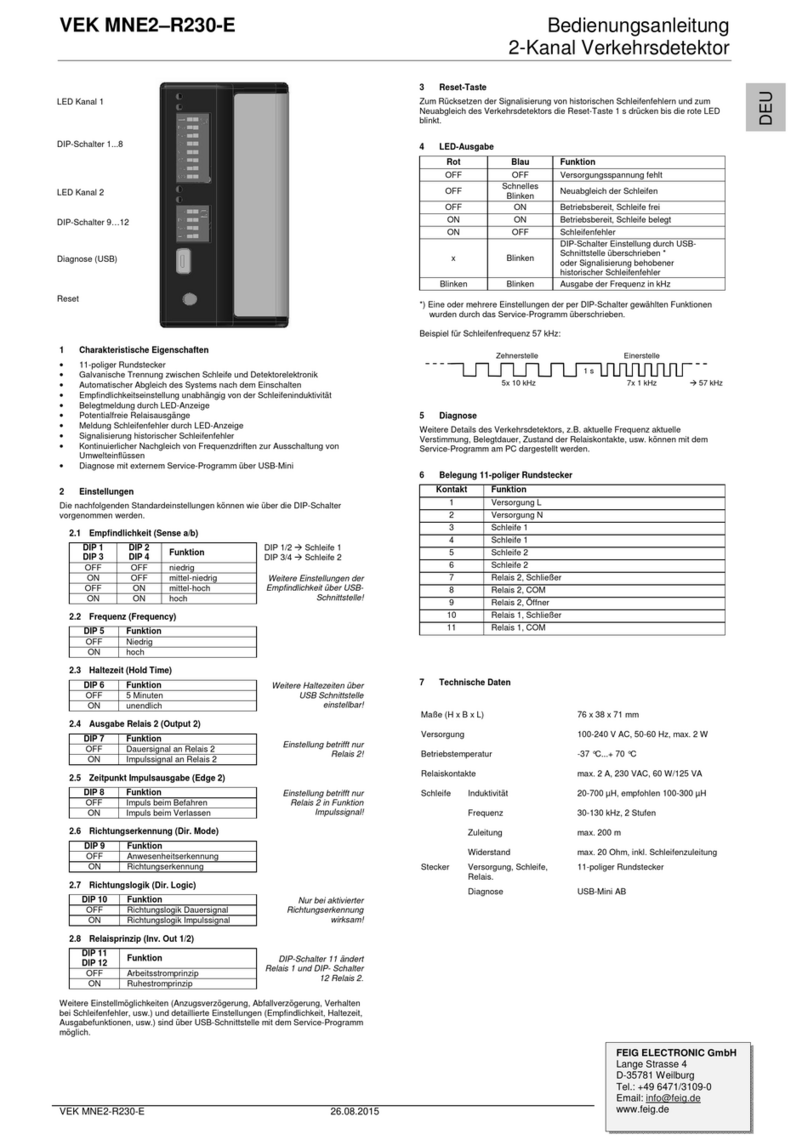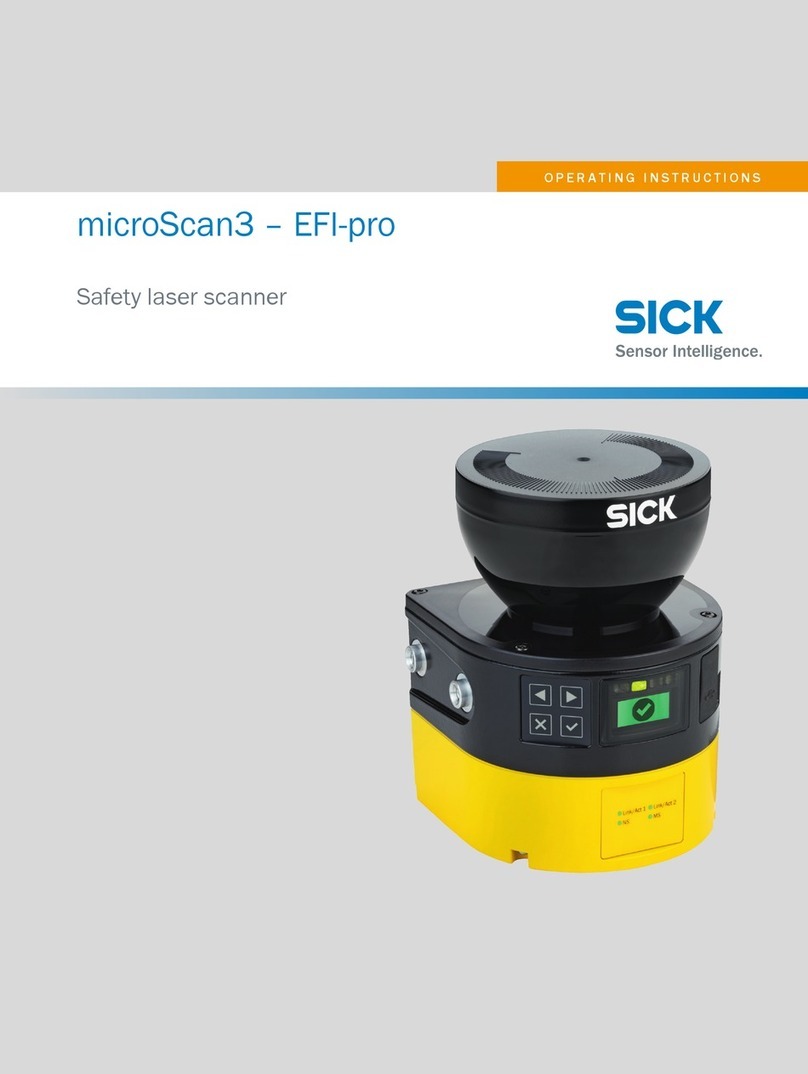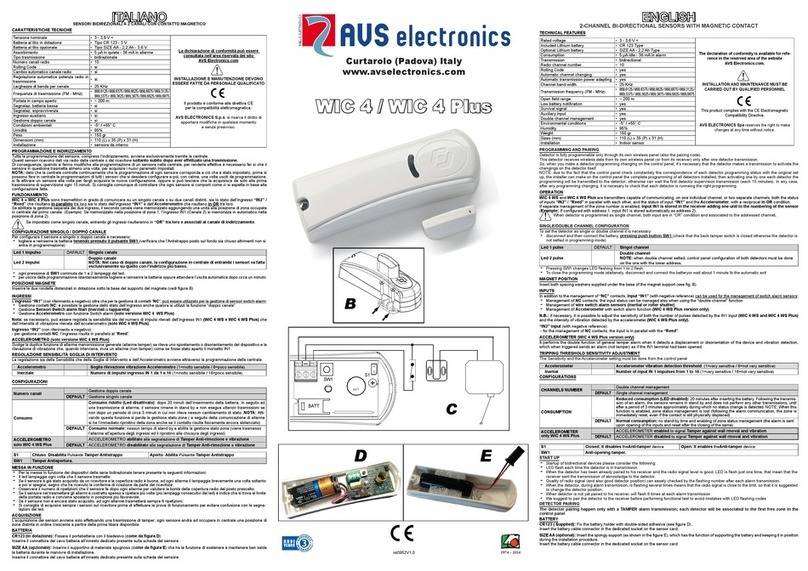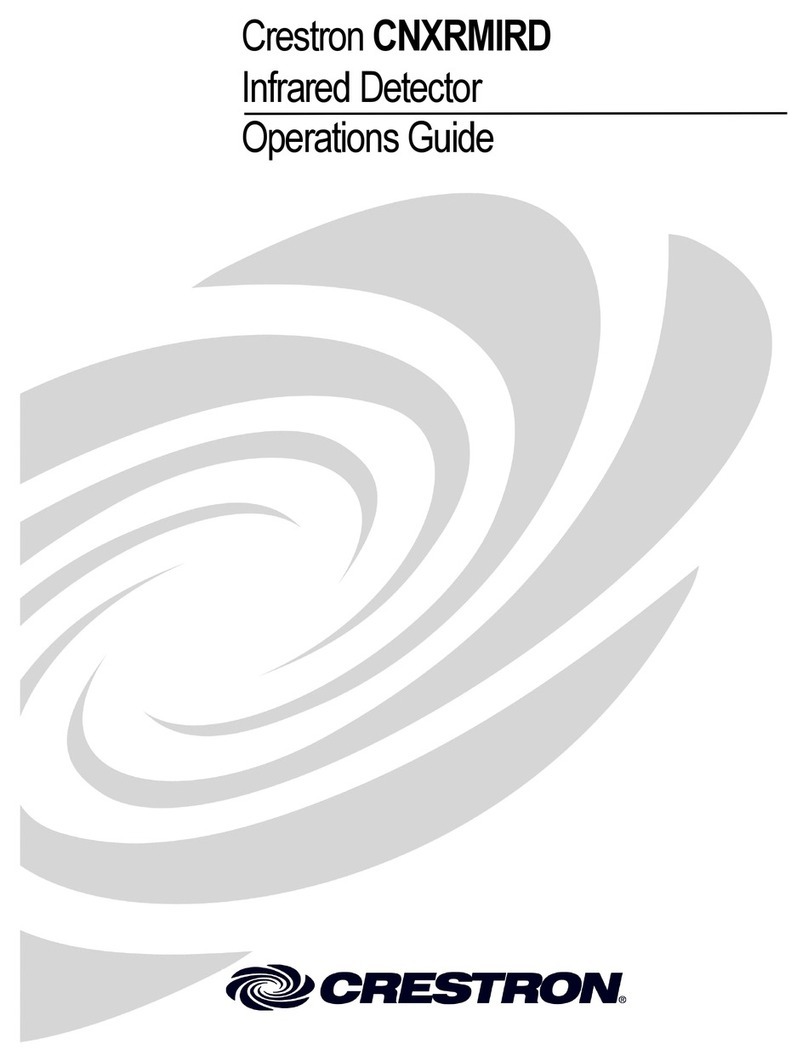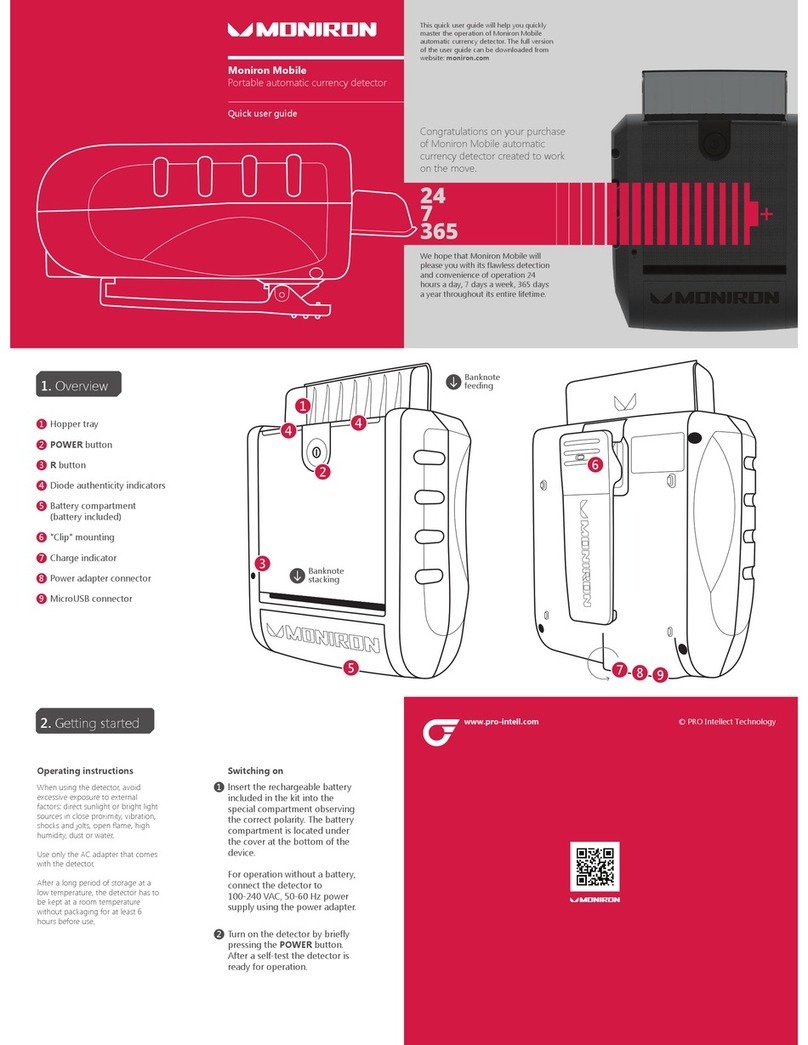Crow FREEWAVE FW-P100 User manual

1
2
3
FW-P100
FREEWAVE™ WIRELESS PIR
ELECTRONIC ENGINEERING LTD.
INSTALLATION INSTRUCTIONS
P/N 7101405 REV. C A.Y.
INTRODUCTION
The FW -P100 is an advanced, fully supervised
low-current wireless PIR that includes a FreeWave
transmitter. Both transmitter and detector circuits
are powered by long life Lithium battery.
Each FW-P100 has a unique ID code (This code is
impossible to reproduce). Compatible FreeWave
receivers are designed to “learn” specific IDs and
respond only to them.
Following detection, FW-P100 triggers the on-
board transmitter that transmits its specific
FreeW ave ID followed by an alarm signal and
status designators for battery condition. If detector
cover is removed Tamper Event triggers the on-
board transmitter.
Alarm and other data are forwarded to the alarm
control panel. A periodic test transmission for
supervision purpose takes place automatically
once in 12~14 min. The receiver is informed that
the particular detector is taking an active part in the
wireless security system.
The FW-P100 has unique Alarm Power Saver
(APS) mechanism that enables transmitter
activation only 2 min after the last movement has
been detected.
FEATURES
State-of-the-art wireless security system
Low current ASIC PIR Technology
Powered by a 3Volt Lithium battery
Battery life : up to 4 years
Built in Automatic Power Saver (APS)
Frequency Band: 868MHz,433MHz
Low Battery condition signal transmission
Test mode for PIR coverage and RF signal.
Range up to 1 km at free space.
Height installation calibration free (1.5m - 3.6m).
Unique ID number
4
5
6
OPERATION
The Wireless PIR transmits the following events
data:
SUPERVISION
-
a periodical transmission.
Every 12~14 min indicates detector’s presence.
ALARM – alarm transmission triggered by PIR
intrusion detection.
LOW BAT – Whenever the battery reaches a pre-
set low level (2.4V) Battery Low signal will be sent
with the next message (Supervision, Alarm, etc).
TAMPER – Whenever the FW-P100 cover is
removed or the unit’s cover is put back, a
message will be transmitted with “Tamper”
signal.
APS
The unique APS (Automatic Power Saver) function
built in the detector enables a battery life span up
to four years. The detector will transmit only when
the last event has occurred more than 2 minutes
prior to the current one.
SELECT MOUNTING LOCATION
Select the mounting location so that an intruder
will cross the beams of the selected pattern.
As the detector is a wireless transmitter, and in
order to take full advantage from PIR
sophisticated operation, do not install the
detector in areas where large metal objects
could interfere the transmission of signals. It is
also advisable to avoid following locations:
Facing direct sunlight.
Facing areas that may change temperature
rapidly.
Areas where there are air ducts or
substantial airflows.
Installation on metal wall.
The FW-P100 performs better when provided
with a constant and stable environment.
FIG. 1 - REMOVAL OF FRONT COVER
7
8
9
MOUNTING THE DETECTOR
1. To remove the front cover, unscrew the holding
screw and insert a flat screwdriver in the slot
between the front and the bottom above the
holding screw hole and push gently, until the front
cover is disengaged and the opening click is
heard.(Fig. 1)
2. To remove the PC board, carefully unscrew the
holding screw located on the PC board.
3. Break out the desired holes for proper installing.
4. Mount the detector base to the wall, corner or
ceiling.
5. Reinstall the PC board by fully tightening the
holding screw.
6. Before battery replacement capacitors discharge
must be done - use flat screwdriver to make
momentary short circuit for JP2 pins.(Fig. 3)
7. Install battery in the battery holder according
polarity.
8. Replace the cover by inserting it back in the
appropriate closing pin until the closing click is
heard.
FIG. 2 - KNOCKOUT HOLES
FIG. 3 - CIRCUIT LAYOUT
10
11
12
SETTING UP THE DETECTOR (Fig. 3)
The sensitivity adjustment jumper sets up the
detector for normal or harsh environment
condition.
Setting the Sensitivity Adjustment (Pulse
Width) Jumper
Position 1= Normal
Position AUTO = Harsh
The “1” position setting is for normal operation.
The “AUTO” position setting is for harsh
environment locations with air drafts or small
animals.
RSSI – RF SIGNAL INDICATION
The FREEWAVE control panel has “RF Signal
quality Indication” for each transmitter in order
to help the installer to define best location for
the detector from RF point of view.
The indication value is between 1 and 100,
where 100 is the best RF received signal. If
the RSSI indication is less then 30, it is a sign
for weak RF link, try to find a better installation
for the PIR.
NOTE:
See FREEWAVE control panel installation
instruction.
ID REGISTRATION - “LEARN”
PROCEDURE
Refer to the system receiver’s installation
instructions and follow the procedure given there
for “learning” detector IDs.
Perform transmission by pressing and
releasing tamper switch for learning it by
FREEWAVE control panel receiver.
Make sure that the receiver is at learning
mode - according to control panel installation
instruction.
NOTE:
It is recommended to power up the detector and let
the system receiver “learn” the detector’s ID before
actual installation.
A. Not in use
B. Use for flat
wall mounting
C. Corner
mounting -
use all 4
holes. Sharp
left or right
angle
mounting -
use 2 holes
(top and
bottom)
D. For bracket
mounting
N345

13
14
15
TEST PUSH BUTTON
Push Button is located at the lower left side of the
detector. This button (switch) is used to activate
the walk and RF transmission test of the FW-
P100 detector.
WALK TEST
Press Push Button for a short time (less then 1
second) – this activates the device (IR detection
only, without RF transmission) for 1min, making
walk tests possible.
ALARM TRANSMISSION TEST
Pressing Push Button for at least 2.0 sec
enables the alarm transmission test feature,
which activates 11 transmission signals at 6 sec
intervals (total test time about 1 min).
Please check, that the receiver unit indicates 11
events.
This test enables to activate the alarm
transmission immediately, and bypass the APS 2
minutes limitation.
To check this function it is necessary to verify
that the FREEWAVE control panel display shows
X- Zone number from which the massage
received.
Tamper transmission test.
Change of the tamper switch state will cause
tamper transmissions. Verify on the FREEWAVE
control panel that display shows
Transmission range test.
By Alarm transmission test (Pressing Push
Button for more then 2.0 sec) it’s enable to check
the RF transmission quality (RSSI). Special
indication at the control panel displays
continuously the received RF signal quality.
See page 11 and FREEWAVE control panel
instruction manual.
LENSES-INTERCHANGEABLE HARD
TYPE SPHERICAL LENSES PATTERNS
COVERAGE WIDE
ANGLE
90.5
15m x 15m
(49ft x 49ft)
_____________________________________ ___
TOTAL
DETECTION
ZONES 30*
* 14 long range, 10 intermediate, 6 short range.
16
17
18
FIG. 4 - WIDE ANGLE LENS
0m
2.4m
0.4m 2m 5.15m 15m13.08m
TOP VIEW
SIDE VIEW
90.5 °
BATTERY
A 3 V lithium battery powers the unit. Thanks to
the exclusive APS (Automatic Power Saver)
characteristics, the battery provides about 4 years
of continuous operation (depending on the amount
of alarms).
If the battery reaches a factory preset low level,
the LOW BATTERY signal will be sent and from
this moment the detector remains operational for
another 30 days giving enough time to replace the
3V lithium battery.
BATTERY REPLACEMENT
Remove the front cover by inserting a
flat screwdriver in the appropriate slot.
Take out the old battery.
Before battery replacement capacitors
discharge must be done.
Use flat screwdriver to make
momentary short circuit on JP2
pins. (see Fig.3)
Install a new battery according polarity.
CAUTION !!!
RISK OF EXPLOSION IF BATTERY IS
REPLACED BY AN INCORRECT TYPE.
DISPOSE OF USED BATTERIES
ACCORDING TO THE INSTRUCTIONS.
19
20
21
FIG. 5 - REPLACING THE LENS
REPLACING THE LENS
1. Remove the front cover by inserting a flat
screwdriver in the appropriate slot (fig.1).
2. Using a small flat screwdriver, press on left,
right and middle snaps of the lens and pull
the lens out from its place (front cover side)
(fig.5).
3. Replace a new lens.
4. Push the lens to its place by pressing again
from outside of the front cover until a click is
heard (fig.5).
5. Replace front cover.
This device complies with:
European Council Directive EMC
89/336/EEC
EN50130-4
EN301489
EN300220
EN50081.
SAFETY 73/23/EEC
EN60950 (ITE)
22
23
24
TECHNICAL SPECIFICATIONS
Data Protocol FreeWave
Modulation Type FSK (1 Frequency)
Frequency band 868MHz / 433MHz
Identification Unique ID serial number – 24 bit
Event Transmission Alarm, Tamper, Test, Supervision,
Low Bat
Supervision Timing 12~14 minutes (randomly)
Detection Method Dual Element PIR (ASIC Based)
Detection Speed 0.3 ~ 1.5 m/sec
Lens Type Spherical Hard Lens
Detection Coverage 90.515m x 15m
Range in open space up to 1km
Environment Condition Jumper for Normal or Harsh selection
Battery Lithium. 3V Type: xx123 Size: 2/3AA
Current Consumption
Standby ~10 A
Transmission ~16 mA
Power Saving APS (Automatic Power Saver)
Installer Test Modes LED Idicator (RF & Optic) Walk test &
Alarm transmission test
Operating temperature
Range -10C to +50C
Dimensions 137mm x 65mm x 49mm
(5.3” x 2.8” x 2.1”)
Weight (inc. battery) 120 gr
!
!" # $
" # $ % $ $
# & $ $
$ ' $
(
%
) * $ $
%
&
+ ,
$ $ $ ,
, ,
-
$. $
$ .
% & . &
. % $
*
$ $ $ * $ $
/ 0
$
$. $
,
# $ $ ,
0
%
$$ $
#
0 $ # ,
CROW ELECTRONIC ENGINEERING LTD.
ISRAEL: Crow Electronic Engineering Ltd.
12 Kineret St. Airport City, 70100
PO. Box 293 Ben Gurion Airport
Tel: 972-3-9726000
Fax: 972-3-9726001
E-mail: support@crow.co.il
USA: 2160 North Central Road,
Fort Lee, N.J. 07024
Tel: 1-800-GET CROW
or (201) 944 0005
Fax: (201) 944 1199
E-mail: support@crowelec.com
AUSTRALIA: 429 Nepean HWY Brighton East Vic 3187
Tel: 61-3-9596 7222
Fax: 61-3-9596 0888
E-mail: crow@c rowaust.com.au
POLAND: VIDICON SP. ZO. O.
15 Povazkowska St.
01 – 797 Warsaw Poland
Tel: 48 22 562 3000
Fax: 48 22 562 3030
E-mail: vidicon@vidicon.pl
LATIN AMERICA: CROW LATIN AMERICA
5753 NW 151
ST
.Street
MIAMI LAKES,
FL 33014 – USA
Tel: +1-305-823-8700
Fax: +1-305-823-8711
E-mail: sales@crowlatinamerica.com
ITALY: DEATRONIC
VIA Giulianello 4/14
00178 ROMA, ITALY
Tel: +39-0676-12912
Fax: +39-0676-12601
E-mail: info@deatronic.com
# ! !# % $ &&% ' # # # # & !# % # !
(
) * * +
BE50
Zone # X Open
Trouble Zone # X
The battery must be replaced
by Size 2/3 CR 17345V
Lithium battery 3V
Models as: DL123A DURACELL Inc
CR123A SANYO Elc
CR123A GP
Other Crow Security Sensor manuals
